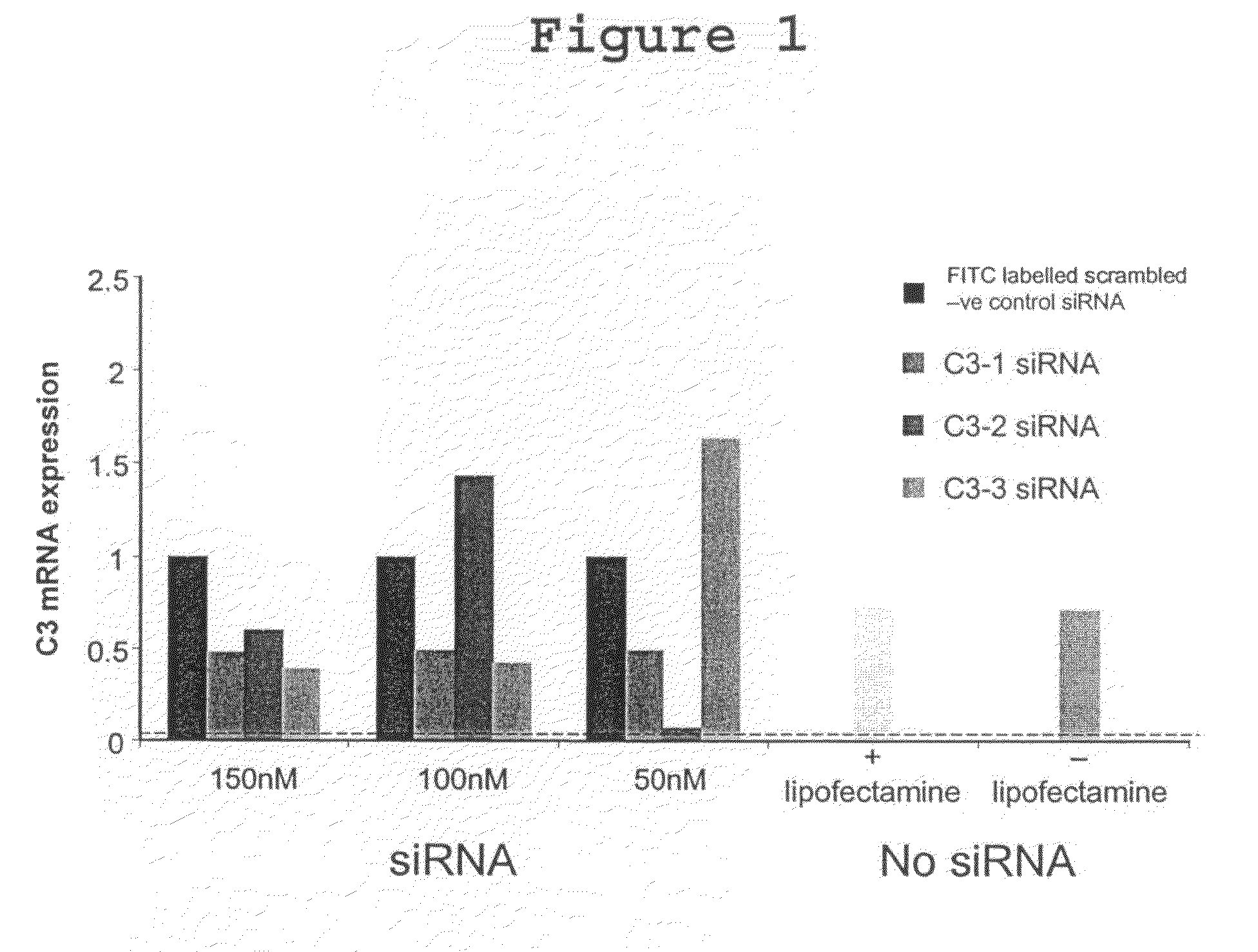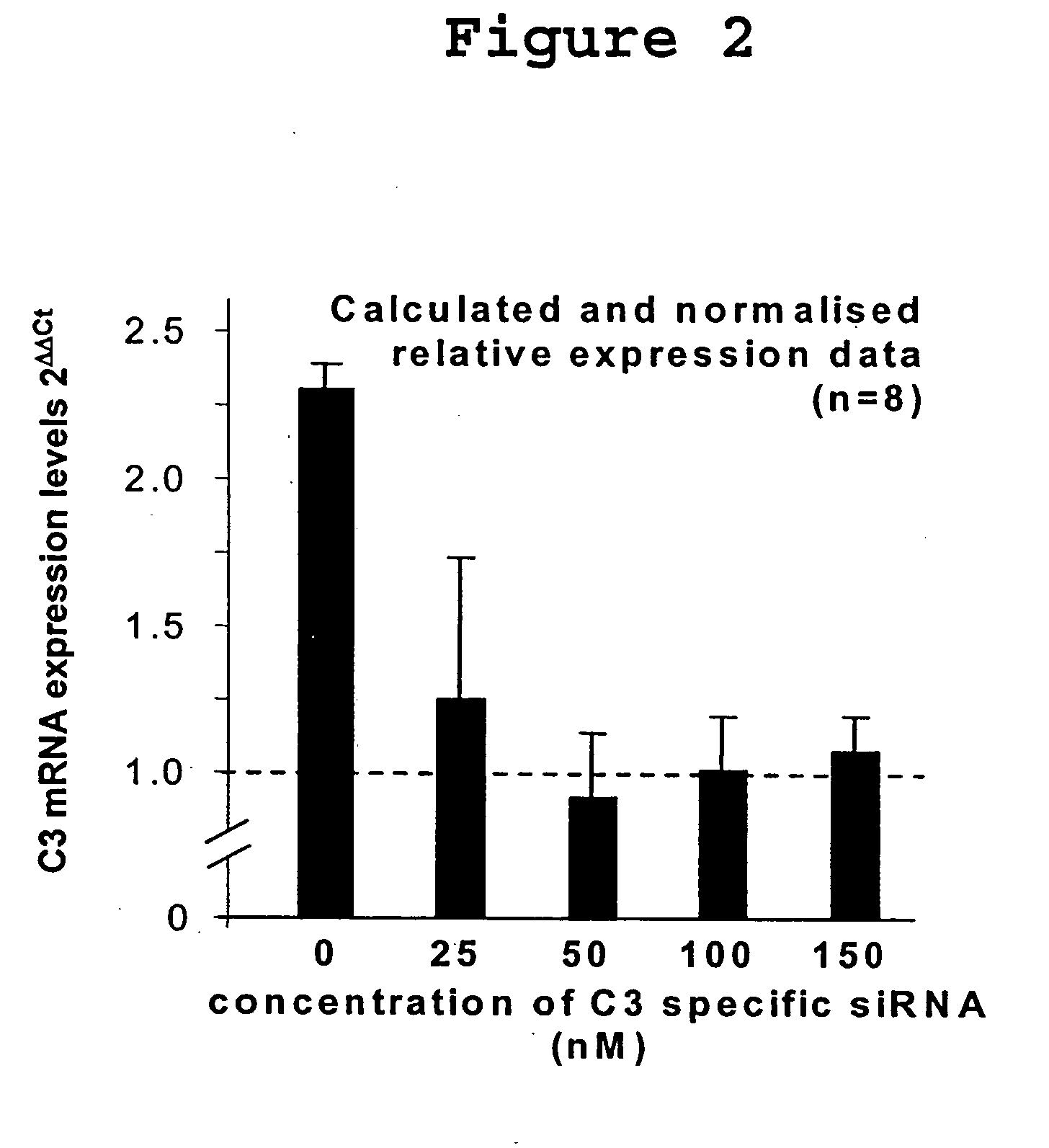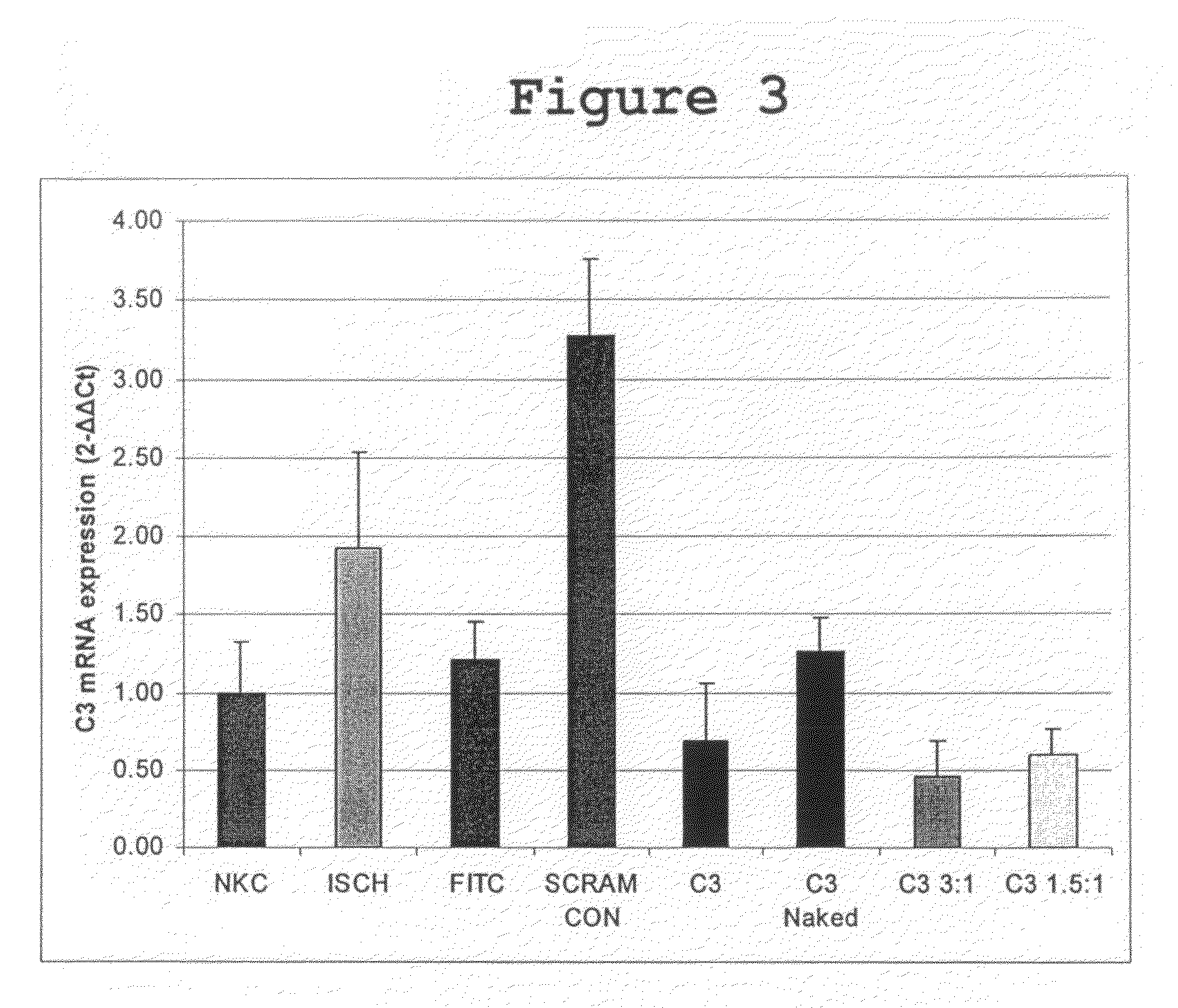Compositions and Methods of Using siRNA to Knockdown Gene Expression and to Improve Solid Organ and Cell Transplantation
a technology of sirna and gene expression, applied in the field of compositions and methods of using sirna to knock down gene expression and improve solid organ and cell transplantation, can solve the problems of organ graft rejection invariably, the immune system poses the most significant barrier to the long term survival of transplanted organs, and the organ transplantation still faces major problems, so as to suppress the rejection of a transplanted organ, down-regulating or inhibiting the expression
- Summary
- Abstract
- Description
- Claims
- Application Information
AI Technical Summary
Benefits of technology
Problems solved by technology
Method used
Image
Examples
example 1
siRNA Mediated C3 Expression Knockdown In Vitro
[0061]RNA interference blocks gene expression according to small unique segments of their sequence. This natural process can be exploited to reduce transcription of specific genes. In transplantation, it is established that donor derived complement C3 is rapidly upregulated in ischemia / reperfusion injury (I / RI), contributing to tissue damage. Complement C3 is described as a local mediator of various forms of injury and immune regulation and is a valid target for gene knockdown after transplant ischemia / reperfusion injury that may well assist in the regulation of allo-immunity as well. This study sought to exploit siRNA to knock-down C3 gene expression in donor organs.
[0062]Rat renal epithelial cell lines were stimulated with 10 μg / ml IL-1 and 0.1 μg / ml IL-6 to upregulate C3 gene expression. 72 hours after stimulation, the cells were transfected with one of a panel of C3-specific siRNAs.
siRNA sequenceSequence i.d.(SEQ ID NOS 335-337)C3-1...
example 2
siRNA Mediated C3 Expression Knockdown In Vivo
[0065]The most effective C3 siRNA, as determined in the previous experiment, was then packaged into synthetic polycationic nanoparticles that facilitate in vivo siRNA transfection. The nanoparticles are composed of PolyTran, a family of branched histidine (H) and lysine (K) polymers, effective for in vitro, in vivo, and ex vivo siRNA transfer. Their core sequence is as follows: R-KR-KR-KR (SEQ ID NO: 338), where R=[HHHKHHHKHHHKHHH]2 KH4NH4 (SEQ ID NO: 339). For in vivo experiments, the following branched HK polymers were initially tested for their efficacy to deliver siRNA into allograft cells: H3K4b. This branched polymer has the same core and structure described above except the R branches differ: R=KHHHKHHHKHHHKHHHK (SEQ ID NO: 340). The polymers were selected because of their in vitro or in vivo efficacy for different nucleic acid forms. The branched HK polymer was dissolved in aqueous solution and then mixed with siRNA aqueous solut...
example 3
Determination of Peptide Sequences Concentrated in Transplanted Kidneys by Phage Display
[0069]In order to provide organ target specificity for siRNA-containing nanoparticles, peptides concentrated in the organ of interest can be identified by phage display. This method was used to identify candidate target peptides in the rat model of kidney transplantation described above. Donor kidneys were flushed with Hyper Osmolar Citrate and stored at 4° C. for 4 hours before transplantation into a syngeneic host. After 48 hours, recipients were anaesthetized and injected via the tail vein with the prepared cysteine-constrained 7 mer phage library (New England Biolabs). After 5 minutes, the transplanted kidneys were harvested and phage extracted from the kidney, in a first round of “in vivo biopanning”. The extracted phage were expanded in E. coli bacteria before being injected into another kidney transplant recipient. This biopanning was repeated for a total of three rounds. After each round,...
PUM
| Property | Measurement | Unit |
|---|---|---|
| Real Time PCR | aaaaa | aaaaa |
| diameters | aaaaa | aaaaa |
| diameters | aaaaa | aaaaa |
Abstract
Description
Claims
Application Information
 Login to View More
Login to View More - R&D
- Intellectual Property
- Life Sciences
- Materials
- Tech Scout
- Unparalleled Data Quality
- Higher Quality Content
- 60% Fewer Hallucinations
Browse by: Latest US Patents, China's latest patents, Technical Efficacy Thesaurus, Application Domain, Technology Topic, Popular Technical Reports.
© 2025 PatSnap. All rights reserved.Legal|Privacy policy|Modern Slavery Act Transparency Statement|Sitemap|About US| Contact US: help@patsnap.com



